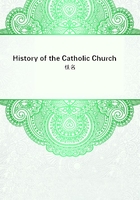
第204章
Notwithstanding the petition presented against the Spanish marriage by Parliament, Mary persisted in the policy suggested to her by the Emperor. Flemish envoys arrived on New Year's Day 1554 to arrange the preliminaries. The marriage treaty was signed and two days later it was announced to the mayor and the chief citizens of London. This was the signal for the conspirators, who had been working secretly for months, to bring their designs to a head. News soon arrived in London that Sir Peter Carew had risen in Devon and had captured Exeter, that Sir Thomas Wyatt was rousing the men of Kent, and that Sir James Crofts had gone to Wales and the Duke of Suffolk to the midlands to rally the forces of disloyalty. But the great body of the English people were too deeply attached to their sovereign to respond to the appeal of the rebel leaders. Wyatt's movement alone threatened to be dangerous. As his forces advanced to the gates of London, Mary, who had shown the greatest courage throughout the crisis, went in person to the Guildhall to call upon the citizens of London to defend their sovereign. Her invitation was responded to with enthusiasm, and when Wyatt had succeeded in forcing his way as far as Ludgate Circus, he was obliged to retire and to surrender himself a prisoner to the queen's forces. Mary, who for so far had followed a policy of extreme mildness, felt that she could do so no longer, and that she must make it clear to her subjects that to declare war on the throne was a serious crime. Wyatt, the Duke of Suffolk, father of Lady Jane Grey, and several of the leaders were tried and put to death. Already in November Lady Jane Grey, her husband and Cranmer had been condemned to death as traitors. The sentence was not, however, carried out, nor was it likely to have been, had not the rebellion shown that Mary's enemies might utilise such dangerous claimants to the throne for stirring up new disaffection. Lady Jane Grey[1] and her husband were put to death on Tower Hill (Feb. 1554); several of the other conspirators were punished only by imprisonment, and a general pardon was published for the great body of the insurgents. Mary's treatment of the offenders, however the execution of Lady Jane Grey may be regarded, was in striking contrast to what might have been expected to have taken place in similar circumstances had the throne been occupied by her father or even by her sister Elizabeth. From the confessions of some of the rebels as well as from the correspondence of the French ambassador serious evidence was furnished to show that Elizabeth was implicated in the rebellion. She was summoned to London to answer the charges brought against her, and though she protested her innocence she was committed to the Tower. Many members of the council were convinced of her guilt, but Mary, refusing to believe that her sister was privy to the designs of the conspirators, ordered her release.
The terms of the marriage treaty having been confirmed by Parliament (April 1554) Philip arrived in England, and on the 25th July the marriage was celebrated in Westminster Abbey. Philip and Mary were proclaimed "by the grace of God King and Queen of England, France, Naples, Jerusalem, and Ireland, Defenders of the Faith, Princes of Spain and Sicily, Arch-Dukes of Austria, Dukes of Milan, Burgundy and Brabant, Counts of Habsburg, Flanders, and Tyrol." The Emperor had at last carried his point, and, as the presence of Cardinal Pole in England could no longer prove a danger to his designs, the latter was now free to come to England. During the early portions of the year steps had been taken to prepare England for the worthy reception of the papal legate. In March four of the reforming bishops were deprived of their Sees on the ground that they were married, and three others who held their appointments only by letters patent of Edward VI. were removed. On the 1st April six new bishops were consecrated by Gardiner to fill the vacant Sees. Cranmer, Latimer, and Ridley were sent down to Oxford to defend their views in a public discussion, arranged undoubtedly with the object of forwarding the national reconciliation with Rome. There were still, however, difficulties that must be removed before Cardinal Pole could be allowed to land on English soil.
The real objection to the return of England to the Roman obedience was the ownership of the Church lands, and from what had happened in the two previous sessions it was perfectly clear that those who had benefited by the plunder of the Church lands were determined to refuse to make restoration. After prolonged negotiations Pole agreed that, while the Pope could not approve of what had been done, he would not insist on the restoration of ecclesiastical property.
When everything had been arranged Parliament was summoned to meet in November 1554. The sheriffs were instructed to see that men "of the wise, grave and Catholic sort" should be returned. An Act was passed immediately reversing the sentence of Attainder against Cardinal Pole.
The legate hastened on his way to London where he was welcomed by the King and Queen and Parliament. A supplication was adopted unanimously in the House of Lords, and with but one dissentient in the House of Commons, requesting the King and Queen to procure from the legate absolution from heresy and schism for the English people and a reconciliation of the nation with the Pope. Cardinal Pole attended Parliament on the 30th to pronounce the sentence of absolution, which was received by the King, Queen, Lords, and Commons on bended knees.
This happy event was celebrated by a procession through the streets of London in which the clergymen, aldermen, and citizens took part.